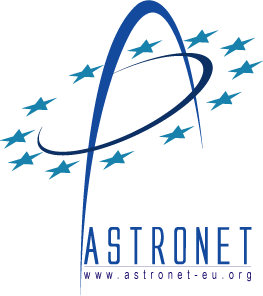Special Session Sp23
24 June 2015
MHD-modeling of active solar structures
Aims and scope
Our Sun is one of billions stars in the Milky Way. While observed from the long distance, the Sun is a medium size and mass star which used to shine for us everyday that we usually do not pay attention to it. However, recent studies reveal a diversity of often unpredictable and peculiar phenomena. The results of our studies show that the Sun consists of few concentric layers: its core, radiative zone, convective zone, and the atmosphere which consists of photosphere, chromosphere, and corona. The source of energy on the Sun are nuclear reactions which take place in the core which is about 100 more dense than water, and its temperature reaches 15 MK. This energy is transferred in the form of gamma rays into the photosphere in the process lasting at least several million years. At the base of the convection zone magnetic field is generated in the process called solar dynamo. This field is convected towards the solar surface, forming so spectacular phenomena as sunspots, prominences, flares, coronal mass ejections, and solar wind.
The Sun slowly reveals its secrets by letting us to understand phenomena which look completely different to those we meet in our everyday life. A number of phenomena are determined by magnetic field which reaches its magnitude of 0.3 Tesla. For comparison purposes the terrestrial magnetic field is at least 6000 times smaller. One of few cardinal puzzles of the Sun is a sudden growth in its temperature between the chromosphere and the solar corona; the temperature of the most external layer of the solar atmosphere, called the solar corona, is about 200 times higher than the temperature of its surface which is located in the photosphere which is the layer emitting the visible light. The other issues are associated with: the 11th year magnetic cycle and their influence on the terrestrial conditions, solar flares which in 30 min release a huge amount of energy, coronal mass ejections into the solar wind, which trigger magnetic substorms.
The aim of this Special Session is to bring together a number of theoreticians in order to
understand contemporary issues of MHD waves (their propagation, dissipation, conversion) in the solar atmosphere. In particular, we focus on complex magnetic fields of the solar atmosphere which is the source of MHD waves and nascent fast solar wind. Realistic numerical models are required to be developed to understand the role of these waves on localized heating of the chromosphere and the solar corona as well as on driving the plasma ejecta (e.g., chromospheric spicules and jets) that may further supply mass to upper layers of the solar atmosphere and contribute to the solar wind formation. These are the contemporary and most significant issues that solar community is facing to solve, and which are also the objectives of this session. Apart from this, the propagation and attenuation/dissipation properties of MHD waves will be discussed within the framework of the realistic models of coronal magnetic regions such as coronal holes, polar plumes, and inter-plume regions, and it will be studied how plasma and magnetic field affects these waves in higher layers of the corona.
This session supposed to improve our understanding of the above mentioned significant and timely scientific issues of heliophysics, and shed light on solving the paradox of coronal heating and supersonic wind acceleration which still remain the cardinal issues of solar physics.
Programme
- I. Photospheric and chromospheric dynamics
- II. Solar coronal dynamics
- III. CME/space weather
Scientific organisers
Elena Khomenko, Kris Murawski, Stefaan Poedts, Temury Zaqarashvili
Contact
kmur @ kft.umcs.lublin.pl
Updated on Tue Jun 16 17:52:35 CEST 2015
|

 A power cut will shut down all EAS services on Tuesday, 10 January 2017 starting at 7:30 CET.
A power cut will shut down all EAS services on Tuesday, 10 January 2017 starting at 7:30 CET.


















